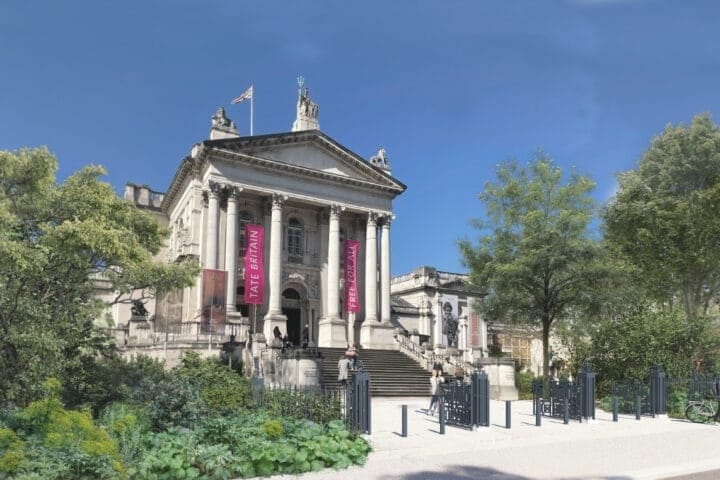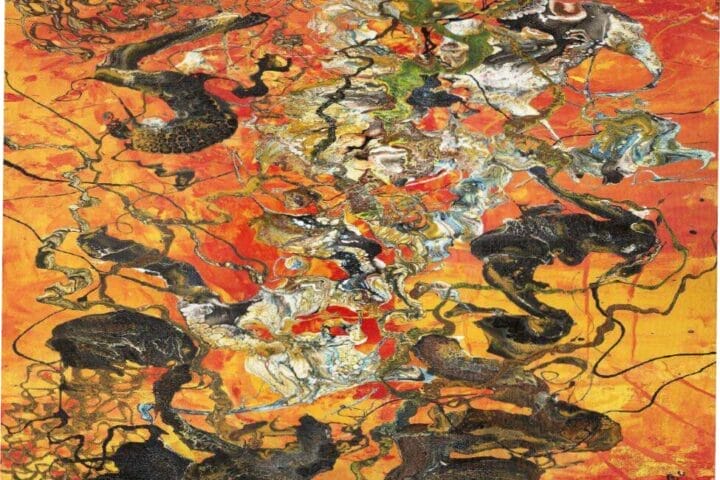Pace Gallery is elated to announce its new representation of the illustrious Kenjiro Okazaki, an artist whose expansive oeuvre traverses painting, sculpture, performance, architecture, landscape design, and robotics. His body of work delves deeply into the realms of time, space, and perception, articulated through an abstract visual language. Okazaki’s interdisciplinary approach seeks to redefine and reconfigure our cognitive experiences of the world. Following his debut solo exhibition at Pace’s Seoul location this summer, which showcased a series of new paintings and sculptures, two of Okazaki’s latest works will be prominently featured at the gallery’s Frieze Seoul booth in September.
Pace will co-represent Okazaki in collaboration with Blum and a distinguished network of galleries, including Galerie Frank Elbaz, Nantenshi Gallery, and Takuro Someya Contemporary Art.
Samanthe Rubell, President of Pace Gallery, expressed:
“We are delighted to welcome Kenjiro Okazaki into the Pace family. Through our expanding activities in Japan and Kenjiro’s recent endeavors with our esteemed colleagues at Blum, we have gained a profound appreciation for the significance and impact of his work within the art historical canon. We eagerly anticipate sharing his diverse and multifaceted oeuvre with global audiences.”

Born in Tokyo in 1955, Okazaki has forged a deeply philosophical practice that spans a variety of mediums and disciplines, exploring the intricate relationships between temporality and human perception. His influences range from Filippo Brunelleschi and Seiichi Shirai to Pontormo, Édouard Manet, Sophie Taeuber-Arp, Paul Klee, Kumagai Morikazu, Sakata Kazuo, and John Cage. Notably, the ideas of English idealist metaphysician John M. E. McTaggart, particularly his 1908 work “The Unreality of Time,” have profoundly influenced Okazaki’s conception of individual artworks as “passages” within a broader, interconnected framework. His extensive collection of abstract paintings functions as an open system of images, capable of endless reconfiguration and reinterpretation, inviting perpetual new perspectives.
Since his early 1990s diptychs, Okazaki has continuously experimented with gestural sequences across multiple canvases, interlinking brushstrokes through homography. These dynamic compositions offer a perpetually shifting visual experience, eschewing any single, static interpretation. Okazaki’s vibrant, richly textured paintings are created using mixtures of acrylic paints that both reflect and transmit light, giving each canvas a luminous, glowing quality. Even the titles of his works are elaborate and poetic, serving as additional layers of artistic interpretation.
Okazaki’s geometric wall reliefs, a series he began in the late 1970s, contemplate the interplay between artwork, architecture, and space. These works, much like his abstract paintings, engage with notions of sequence and seriality, exploring a singular vocabulary of forms through variations in color and spatial orientation.
Residing and working in Tokyo, Okazaki held his inaugural solo exhibition at Muramatsu Gallery in 1981 and has since presented numerous solo exhibitions at prestigious art institutions throughout Japan. His work was notably included in the seminal 1994 exhibition “Japanese Art after 1945: Scream Against the Sky,” which traveled from the Yokohama Museum of Art to the Guggenheim Museum in New York and the San Francisco Museum of Modern Art. In 2002, he was appointed as the director of the Japanese pavilion for the Venice Biennale’s International Architecture Exhibition.
In addition to his artistic endeavors, Okazaki is a prolific author, having penned several influential books. His notable publications include “Renaissance: Condition of Experience” (Bunshun Gakugei Library, 2015), “Abstract Art as Impact: Analysis of Modern Art” (Akishobo, 2018)—for which he received the Minister of Education Award for Fine Arts in 2019—and “Eden of the Senses” (Akishobo, 2021), awarded the 2022 Mainichi Publishing Culture Award.
Pace Gallery’s representation of Kenjiro Okazaki heralds a new chapter for the artist, as his profound and multifaceted works are poised to captivate and inspire audiences worldwide.









